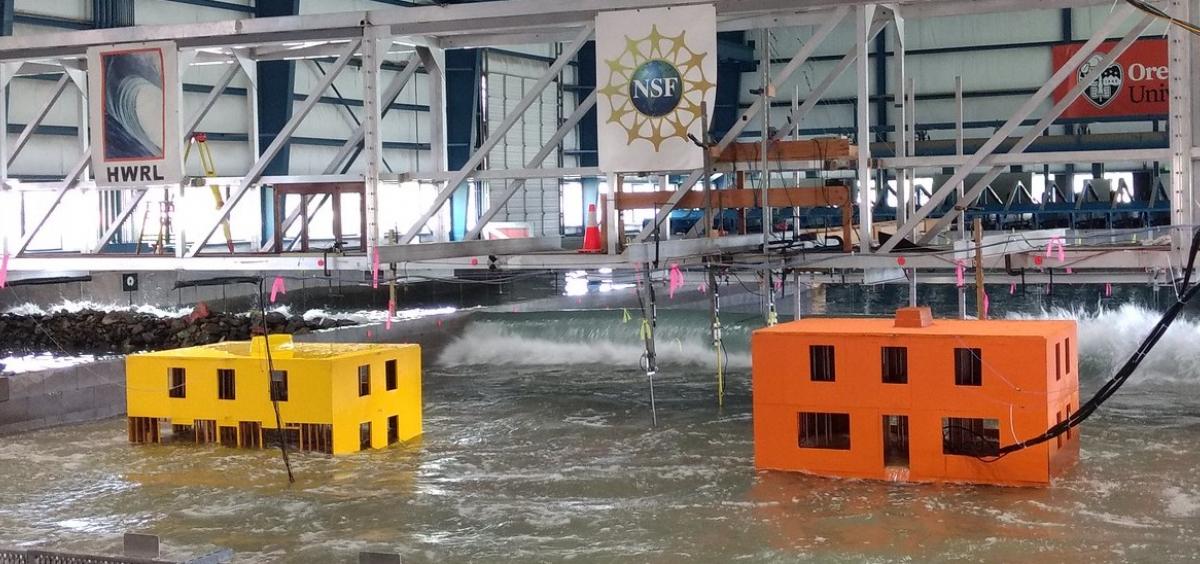
CORVALLIS, Ore. - The National Science Foundation has awarded the Oregon State University College of Engineering nearly $5 million for natural hazards engineering research at OSU's O.H. Hinsdale Wave Research Laboratory.
"We are pleased to receive this significant award from the NSF," said Scott Ashford, Kearney Dean of the Oregon State College of Engineering. "This support of our world-class testing facility will enable new discoveries that will protect our critical infrastructure from natural hazards - and ultimately help communities recover more quickly from these extreme events."
The $4.9 million, five-year grant is a renewal of a similar award for $3.8 million received by the College of Engineering in 2015 and part of a national program - the Natural Hazards Engineering Research Infrastructure - that gives scientists access to multiple types of research facilities. It also provides for educational and outreach activities.
The Hinsdale lab features a large wave flume and a directional wave basin, which both simulate waves from hurricanes and tsunamis and allow for a wide range of testing of waves' impact on built and natural environments.
"We're really excited to have received the renewal award and are looking forward to hosting more projects from researchers across the country and here at OSU," said Dan Cox, Oregon State civil engineering professor and the award's principal investigator. "With this award, we get to continue having an impact on graduate, undergrad and K-12 education. We're proud to be at the center of the coastal engineering universe."
Cox notes that "engineering with nature" has become a battle cry for how engineers work to develop solutions to problems stemming from sea level rise and the other coastal effects of climate change.
"We also have a lot of legacy infrastructure along the coast that needs to be considered in solving these problems," said Cox, joined on the grant by co-principal investigators Pedro Lomonaco, the director of the Hinsdale lab, and Chris Higgins, OSU civil engineering professor. "This award allows researchers to work at developing new green and 'green-gray' hybrid infrastructure systems that meld traditional approaches with green approaches and can be used for climate change adaptation."
Lomonaco added that the grant will enable the lab to acquire new, cutting-edge sensing technologies to assess stress, strain, load and sediment transport resulting from various wave conditions.
"That includes a fully submersible force balance plate that can measure directional loads exerted from waves and tsunamis on coastal structures," he said.
Cox said OSU research has already made an impact on new codes and standards to improve the performance of buildings threatened by extreme coastal conditions.
"The funding renewal will help us take our game to an even higher level," he said.






